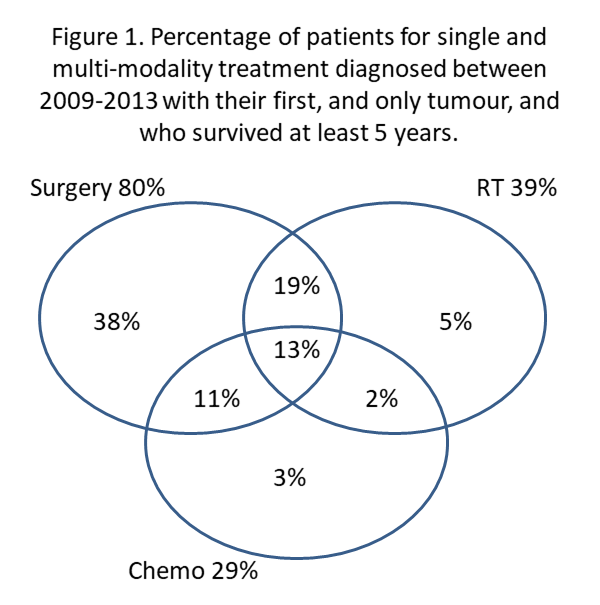The role of radiotherapy, surgery and chemotherapy in the cure of cancer. Is radiotherapy still 40%?
Neil Burnet,
United Kingdom
OC-0752
Abstract
The role of radiotherapy, surgery and chemotherapy in the cure of cancer. Is radiotherapy still 40%?
Authors: Thomas Mee1,2, Karen Kirkby1,2, Noemie Defourny1,2, Neil Burnet2
1University of Manchester, Division of Cancer Sciences, Manchester, United Kingdom; 2The Christie NHS Foundation Trust, Manchester Academic Health Science Centre, Manchester, United Kingdom
Show Affiliations
Hide Affiliations
Purpose or Objective
The three major treatment modalities that play pivotal roles in cancer cure are surgery, radiotherapy (RT), and chemotherapy. Key research from 1992 by Tubiana estimated that 22% of cancer patients are cured predominantly by surgery, 18% predominantly by RT alone or in combination, and 5% predominantly by chemotherapy alone or in combination. Normalising these estimates gives values for predominant cure of 49%, 40% and 11% for surgery, radiotherapy and chemotherapy respectively. The 40% figure for radiotherapy has been widely quoted. We aimed to review these figures, not updated since 1992, using the comprehensive cancer and follow-up data gathered in NHS England.
Material and Methods
In this retrospective population-based study we analysed 5-years of patients who developed their first tumour and had 5-years of vital-status updates. All tumour sites (excluding C44) and all ages were included. We analysed three cohorts: all patients [n=1,032,557], patients who survived 5 years [n=540,753] and patients who did not survive 5 years [n=491,804]. Treatment data was analysed to identify patients who received at least one course of radiotherapy, chemotherapy and/or surgery.
Results
Overall 5 year survival was 52% (540,753 patients). Of these, 90% had at least one record of surgery, radiotherapy or chemotherapy; 80% receiving surgery either alone or in combination; radiotherapy was delivered to 39% and chemotherapy to 29%. 45% received 2 or 3 modalities and 13% received all 3. Figure 1 displays the results for all treatment combinations.
In the cohort who did not survive 5-years, 46% received surgery alone or in combination, 30% radiotherapy and 34% chemotherapy, the latter being the only modality with increased use.

Conclusion
By using 5-year survival from diagnosis, we have data at a well-defined time-point that is easily interpretable in a patient cohort managed using the most contemporaneous treatments. The finding of 52% 5 year survival in > 1 million ‘real world’ cancer patients treated within NHS England is broadly consistent with overall UK figures. There are no equivalent modern, international studies. We recommend this exercise be repeated every 10 years.
These results indicate the dominant role of surgery in cancer survival and that both radiotherapy and chemotherapy play vital curative roles. The high rate of multi-modality treatment, used in 45% of patients surviving 5 years and probably still increasing, is striking and underlines the importance of integrated services within a national strategy.
Our results are remarkably similar to those from Tubiana in 1992 regarding the role of radiotherapy. The fact that radiotherapy contributes significantly to 5-year survival, being delivered to almost 40% of patients, is a critical conclusion. It is contrary to popular perception and should be addressed by more informed public health messaging. It is also critical for service planning.